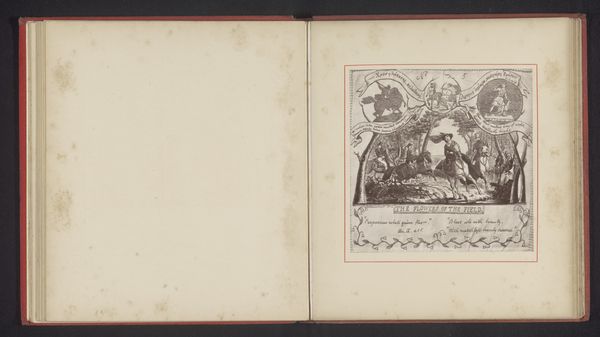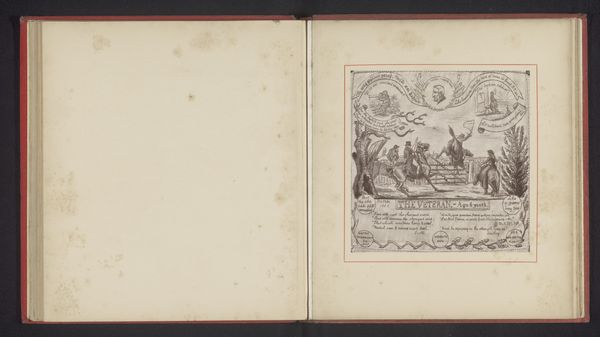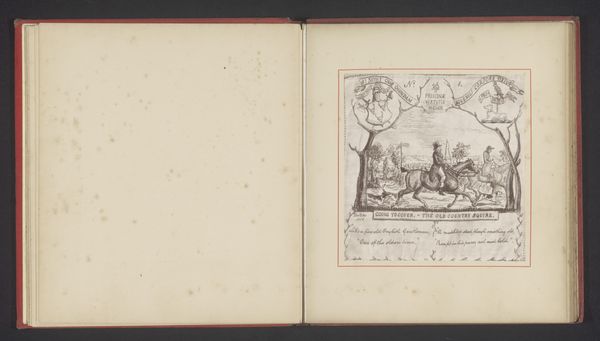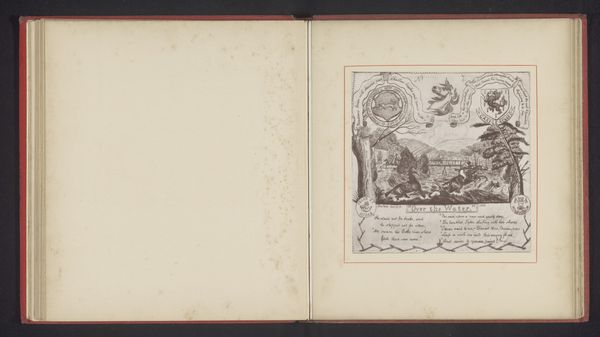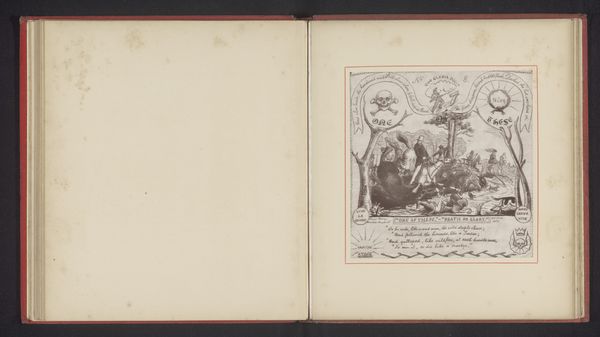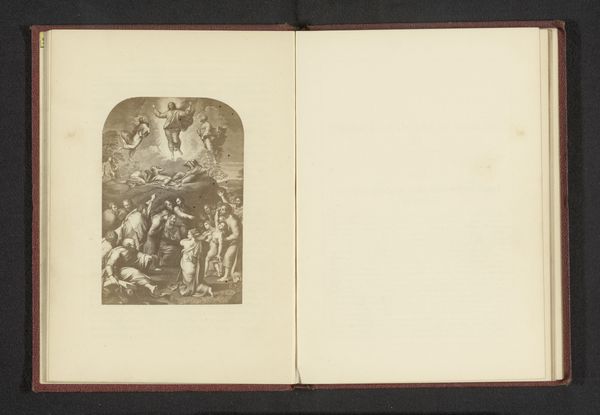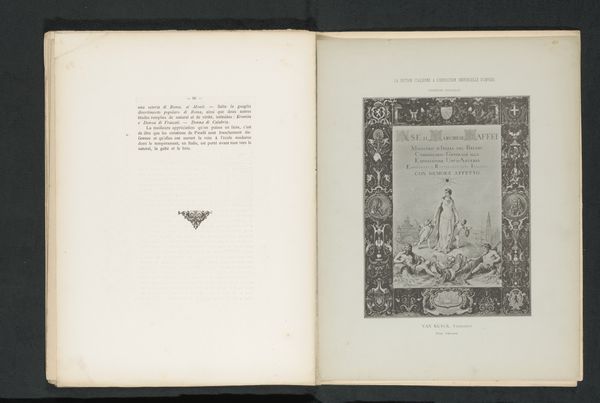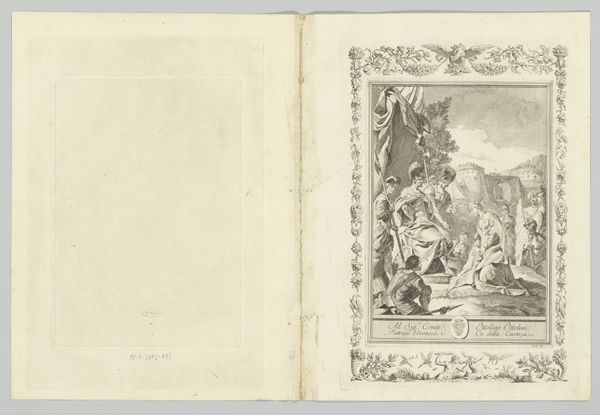
Fotoreproductie van een tekening door Thomas Mervyn Bouchier Marshall, voorstellend drie mensen te paard omringt door wapenschilden en ruiterattributen before 1885
0:00
0:00
drawing, print, etching, pen
#
drawing
# print
#
etching
#
landscape
#
figuration
#
pen
#
history-painting
Dimensions: height 167 mm, width 164 mm
Copyright: Rijks Museum: Open Domain
Editor: So, here we have a photogravure reproduction of a drawing, attributed to Thomas Mervyn Bouchier Marshall, sometime before 1885. It depicts three figures on horseback. The framing with weaponry and heraldry gives it an almost cartoonish, archaic feel. What can you tell me about it? Curator: Well, first, consider the means of production. This is a photogravure - a printmaking process. How does the translation from drawing to photogravure influence its meaning, its circulation? Think about who had access to the original drawing, versus who would have access to a reproduced print. Editor: I see what you mean! More people could see it and the message would reach a wider audience. But, I wonder about the specific choice of process here. Curator: Precisely. Why photogravure? What statement does that make about the value, and therefore accessibility, of the depicted subject matter of Marshall's figures on horseback and accompanying armaments. This isn't just about visibility; it’s about controlling and distributing historical narratives for potentially propagandistic purposes, think of it as a specific political function within image making. Editor: Oh, I get it! The medium isn’t neutral. It's actively shaping our understanding. It becomes something that the population would feel tied to or supportive of through its availability to be widely reproduced and seen. Curator: Exactly. And, think about the materials. Paper, ink, metal plates – all tied to industries, labor, trade. Where do these materials come from? Who controls their distribution and what meaning does it give? Editor: This makes me see this image so differently, from aesthetics to its socio-political implications tied to production and consumption. Thanks! Curator: My pleasure! It's all about understanding the labor, materiality, and power structures embedded within the artistic process itself.
Comments
No comments
Be the first to comment and join the conversation on the ultimate creative platform.
